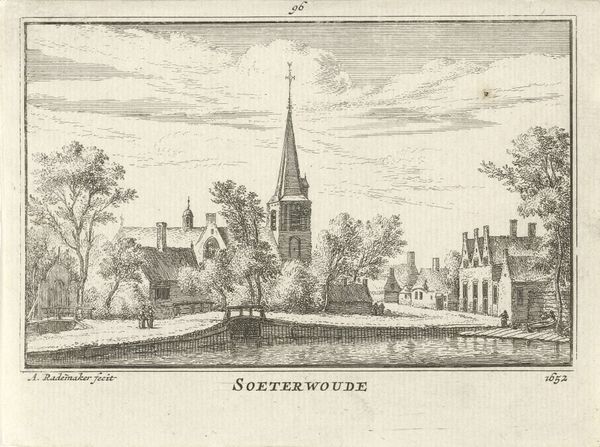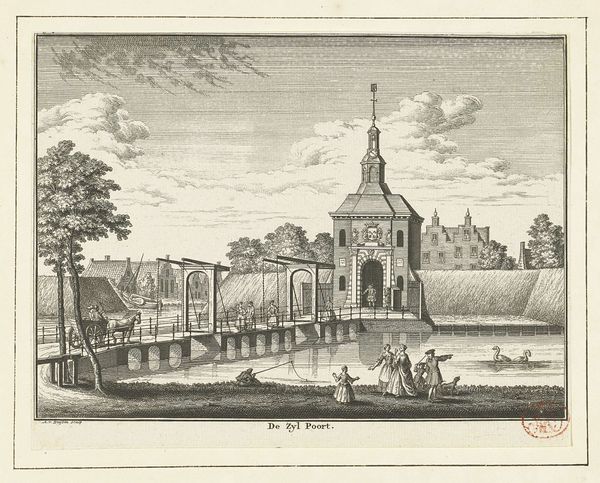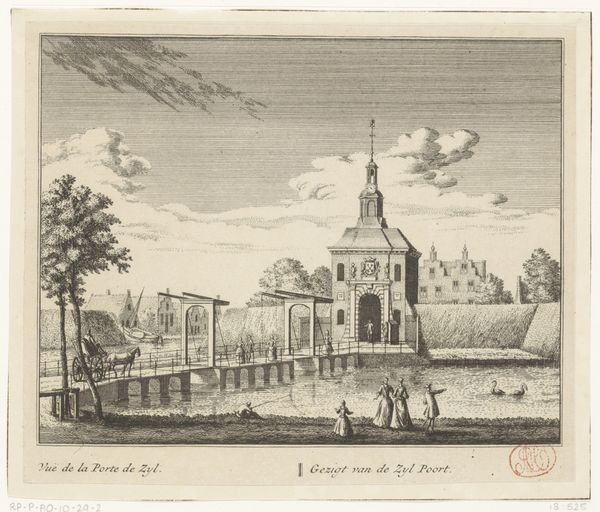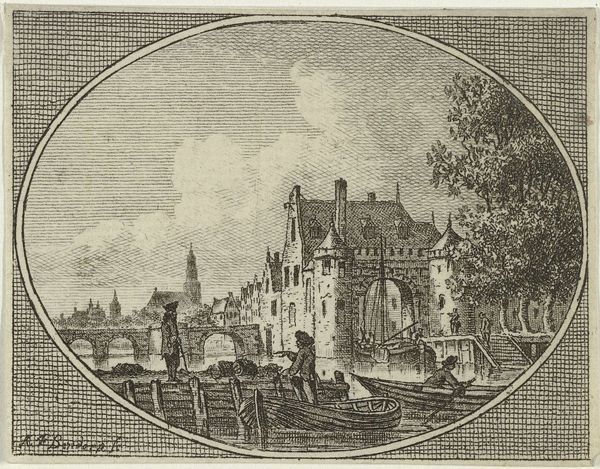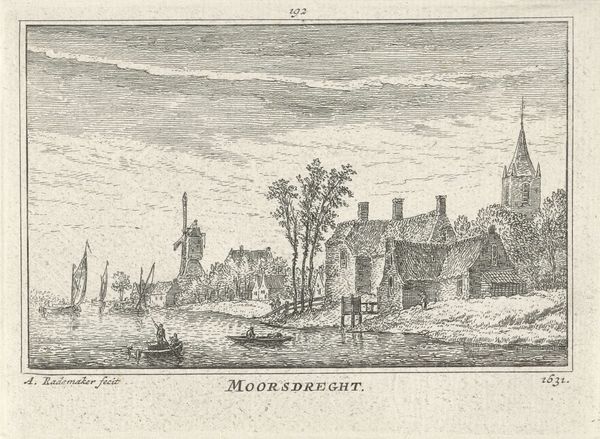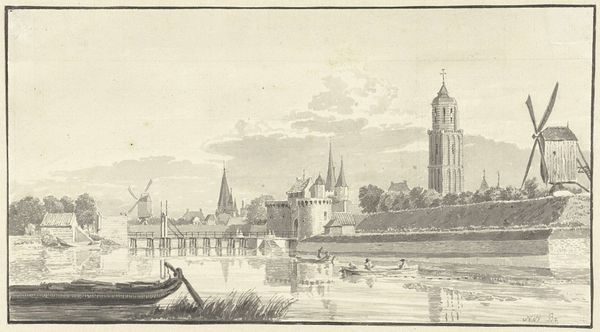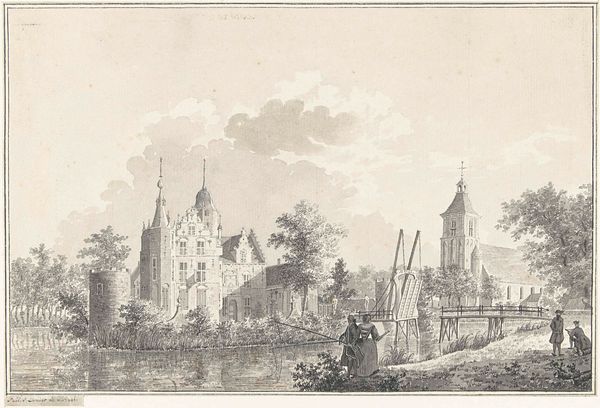
print, engraving
#
dutch-golden-age
# print
#
landscape
#
cityscape
#
engraving
Dimensions: height 80 mm, width 115 mm
Copyright: Rijks Museum: Open Domain
Curator: I find this image to have such a curious melancholy—all those sharp angles rendered in gray lines; like a memory fading into the page, really. Editor: And that, I think, stems from its function: here we have Abraham Rademaker's print, "View of the City Ramparts of Montfoort," created between 1727 and 1733. Currently, it resides in the collection of the Rijksmuseum. It's a really stunning example of Dutch Golden Age cityscape engraving. Curator: Oh, "Golden Age" it may be, but look at that sturdy, somewhat imposing architecture reflected in the still waters; it suggests a yearning for permanence against a backdrop of constant change. It is almost as if the stones themselves hold untold stories of the Dutch people. I wonder what it felt like to be in that tiny boat floating towards that stoic building. Editor: Yes, precisely; it showcases a balance of orthogonal lines, a recurring motif across this era. Take note of the gate on the left acting as an introduction, its shadows hinting at untold narratives contained in architecture that seems caught somewhere between fortress and home. Curator: Fortresses protect something, yes; homes are full of intimate narratives. I also admire Rademaker's commitment to detailing the human figures, capturing a narrative beyond the grand buildings and giving the viewer a story in miniature—in essence creating an interesting contrast, if you will. Editor: True. And by deploying techniques of linear perspective, he evokes not merely representation but invites semiotic participation, urging you to consider not simply architectural presence but function within its ecology through careful mark-making across planes. Curator: Ecology, a grand term indeed. Ultimately, the beauty for me rests within its contemplative aura—not simply as some historical documentation. But as invitation, perhaps; inspiring thoughts about time and about human experiences against this grand stage laid by nature, architecture and engraving. Editor: I completely concur. Its success lies within evoking emotion, beyond any rigid structure, reminding you and me to explore further!
Comments
No comments
Be the first to comment and join the conversation on the ultimate creative platform.

